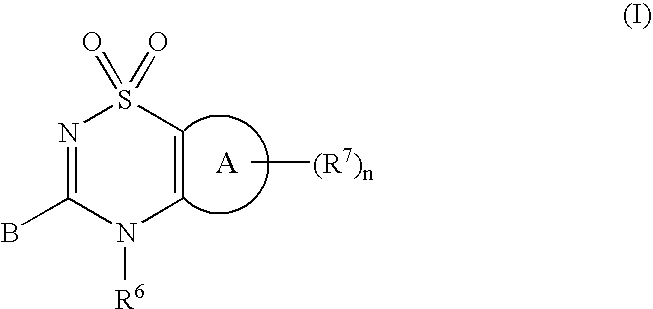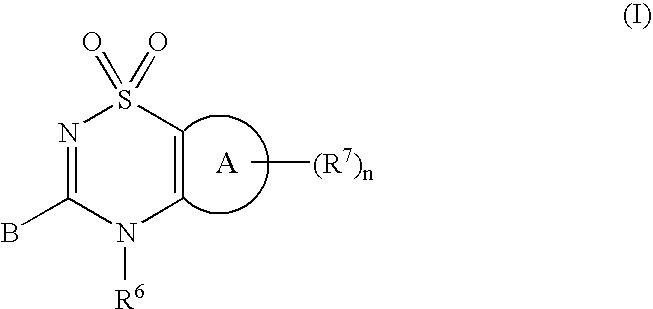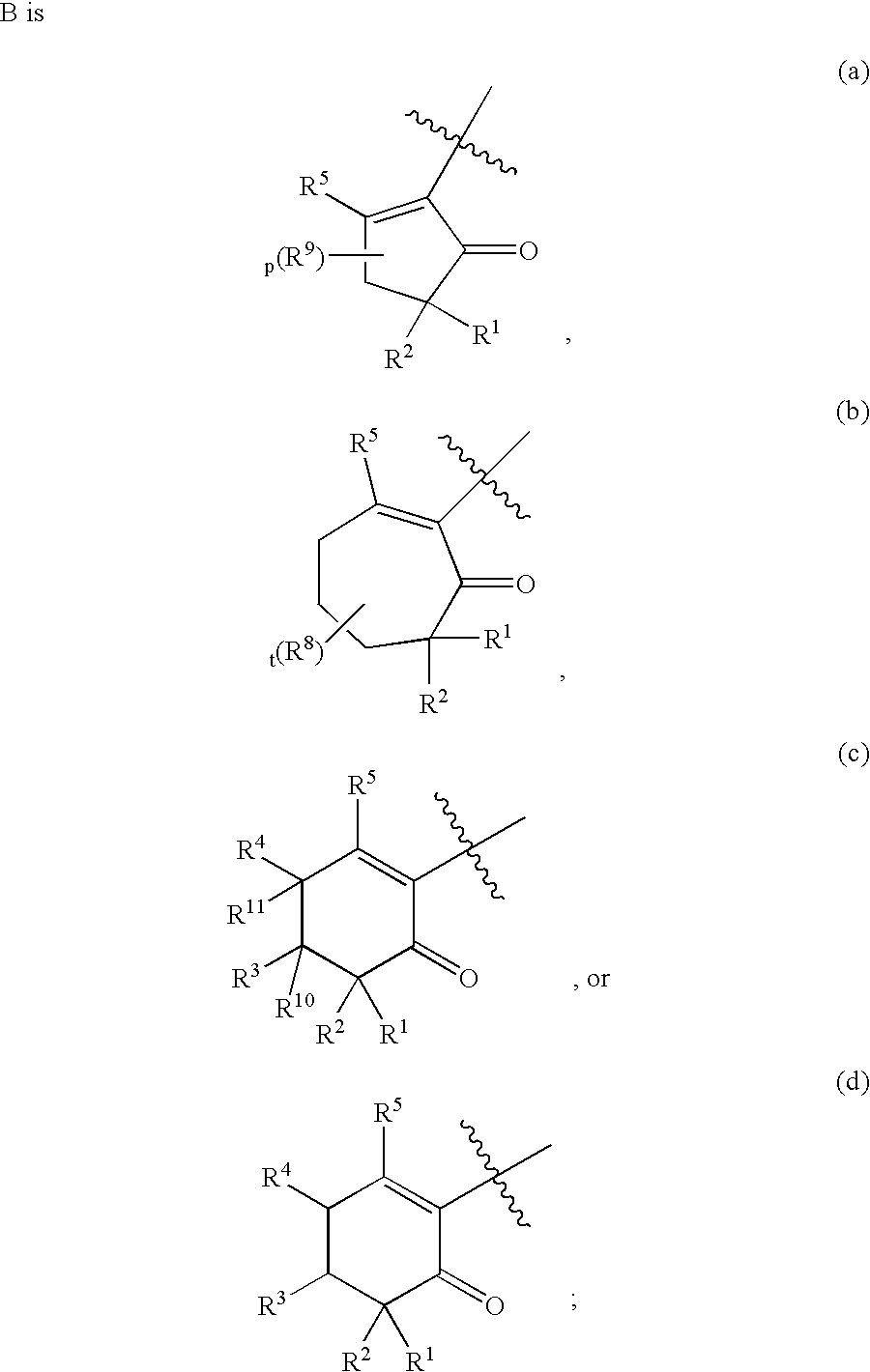Anti-infective agents
a technology of anti-infective agents and active ingredients, applied in the field of new drugs, can solve the problems of side effects and less effective treatment of infections
- Summary
- Abstract
- Description
- Claims
- Application Information
AI Technical Summary
Benefits of technology
Problems solved by technology
Method used
Image
Examples
example 1
3-(1,1-dioxido-4H-1,2,4-benzothiadiazin-3-yl)-4-hydroxy-1,1-dipropyl-2(1H)-naphthalenone
example 1a
Methyl 2-allyl-2-phenyl-4-pentenoate
[1423] A solution of methyl 2-phenylacetate (12.0 g, 80 mmol), allyl bromide (17.3 mL, 200 mmol) and sodium iodide (1 g) in tetrahydrofuran (160 mL) at 0° C. was treated portionwise with sodium hydride (7.36 g, 60% in oil, 184 mmol) over 10 minutes. The solution was allowed to warm to 25° C. and heated at reflux for 18 hours. The mixture was cooled to 0° C., treated with glacial acetic acid (2 mL) and concentrated in vacuo. The residue was partitioned between ethyl acetate and water. The organic phase was washed with saturated sodium bicarbonate solution and saturated sodium chloride solution, dried (Na2SO4), filtered, and concentrated in vacuo. The residue was filtered through a plug of 70-230 mesh silica gel eluting first with hexane and then with 10% ethyl acetate in hexane to give the title compound (17.89 g, 97%). 1H NMR (300 MHz, CDCl3): δ 7.29 (m, 5H), 5.52 (m, 2H), 5.06 (m, 4H), 3.65 (s, 3H), 2.78 (m, 4H).
example 1b
Methyl 2-phenyl-2-propylpentanoate
[1424] A solution of the product of Example 1A (7.5 g, 32.61 mmol) in ethyl acetate (125 mL) was treated with 10% palladium on carbon (600 mg) and stirred at 25° C. under hydrogen gas for 18 hours. The solution was filtered through celite® and the filtrate was concentrated in vacuo to give the title compound (7.63 g, 100%). 1H NMR (300 MHz, CDCl3): δ 7.27 (m, 5H), 3.64 (m, 3H), 1.96 (m, 4H), 1.08 (m, 4H), 0.89 (t, J=7.17 Hz, 6H).
PUM
| Property | Measurement | Unit |
|---|---|---|
| Fraction | aaaaa | aaaaa |
| Electric charge | aaaaa | aaaaa |
| Acidity | aaaaa | aaaaa |
Abstract
Description
Claims
Application Information
 Login to View More
Login to View More - R&D
- Intellectual Property
- Life Sciences
- Materials
- Tech Scout
- Unparalleled Data Quality
- Higher Quality Content
- 60% Fewer Hallucinations
Browse by: Latest US Patents, China's latest patents, Technical Efficacy Thesaurus, Application Domain, Technology Topic, Popular Technical Reports.
© 2025 PatSnap. All rights reserved.Legal|Privacy policy|Modern Slavery Act Transparency Statement|Sitemap|About US| Contact US: help@patsnap.com



